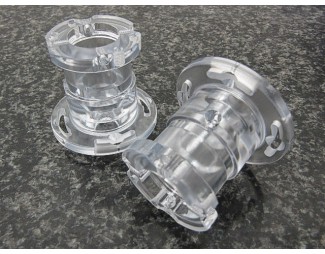The Role of 3D Printing in the Medical Field
3D printing is a process that has been helping one of the essential industries today – the medical field.
Converts Computer-Generated Models to a Physical Model
Surgeons, medical device developers, and researchers have discovered how to use 3D printing to treat and save lives. Medical practitioners can use 3D printing to convert computer-generated models of a patient's organ into a physical model. Through the printed model, they can analyze the situation clearly and discuss it with their colleagues.
The team of doctors can figure out what approach to apply before a patient gets operated. The actual model can help the patient understand clearly what is needed to be done to him during the operation. At present, there are over 100 hospitals in the USA with 3D printing teams comprises of surgeons and radiologists.
Helpful in Medical Researchers
Researchers are developing ways on how they can use 3D printers in manufacturing medical devices and implants. Through 3D printing, they can actually create custom-sized screws to repair broken bones. It is also helpful in scaffolding implants to fix damaged ligaments regrow.
What is impressive about 3D printers used in the medical field is that it utilizes biocompatible materials that bind with the human cells or allow the body to reabsorb the implant naturally. Some researchers are finding ways how to 3D print medical implants using biocompatible synthetic spider silk.
Develops Inexpensive Prosthetic Limbs
If you are a patient who needs prosthetics, one of your problems could be the cost of the required prosthetics. Through 3D printers, an inexpensive prosthetic can be produced. With the help of the 3D printers customizing the prosthetics that will fit the user comfortably is much easier—no need for prebuilt molds and costly alterations.
There are lots of institutions helping people that need prosthetics have been using a 3D printer so they can provide more to those who are in need without spending a lot.
3D Printing can Saves Life
There is a story of a baby named Kaiba Gionfriddo with a weak trachea. Every time his throat collapse, he was having a hard time breathing that makes him blue. He can survive only using a ventilator. Through the effort of Kaiba's doctors, they develop a splint to strengthen the trachea and keep it in the right position.
Using a biocompatible material and applies the 3D printing process, they develop the splint and perform the surgery. The splint is then sewed around the baby's trachea to keep it in place. The material used is something that the body can reabsorb.
As soon as the splint was in place, the lungs were able to function well without the ventilator support. This is a good sign that the baby is going to be okay.
Final Words
3D printing was able to help medical researchers and doctors in treating their patients. They were able to study the medical conditions of each patient they have using the actual model. Because of this, they can provide an accurate assessment of the real situation of the patient, and there will be fewer errors. The medical field is only of the industries that had helped by 3D printing.
Welcome to contact us via enquire@abcrapid.com to get more information.
Search
Recent Post













